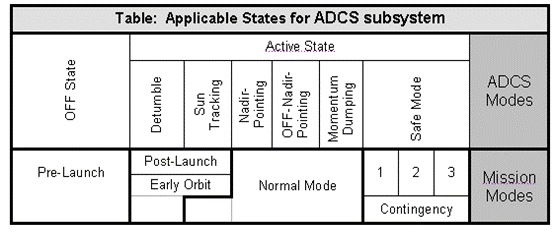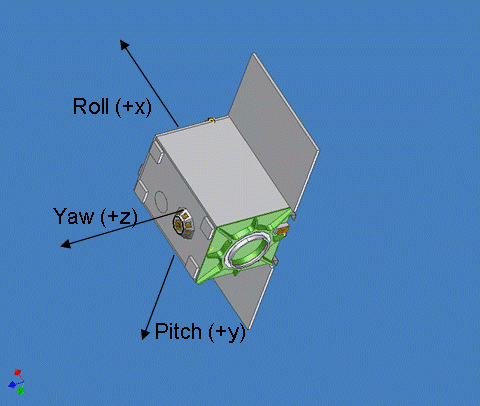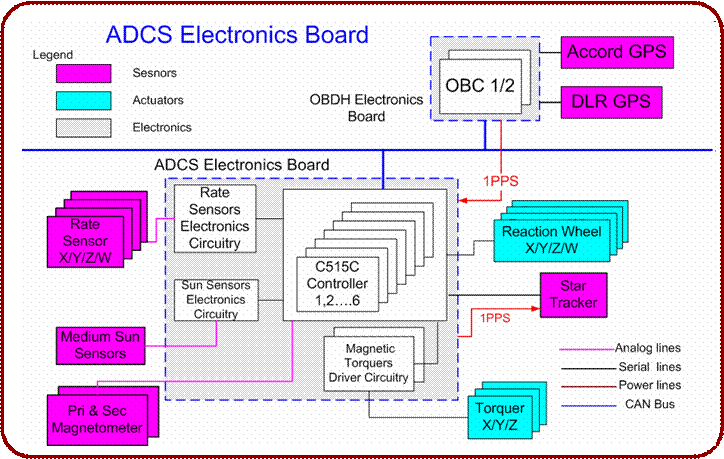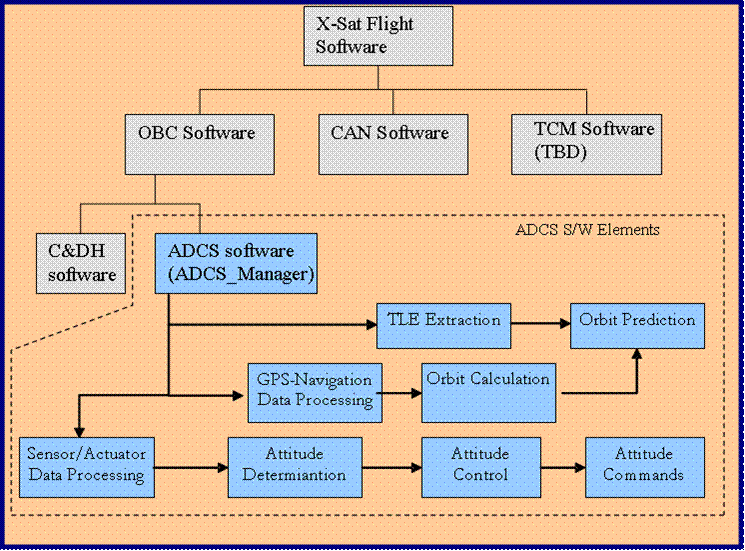XSAT Attitude Determination and Control System (ADCS)
Three Axis stabilization: During imaging under nadir pointing or offset-pointing mode the satellite is to be three-axis stabilized and attitude knowledge should be better than 0.06 deg in pitch and roll.
Off-nadir pointing: Besides the above modes ADCS is also required to perform large slew maneuvers by about ±40o in roll as mentioned under ‘steerability’ and provide the attitude data with an accuracy better than 0.06o.
Steerability: ADCS is required to steer the satellite up to ±40o in roll. The steering ability in roll is required to provide increased revisit opportunities (to image a same place more often) and also for cross-track stereo image acquisition. The steerability should ensure at least one imaging slot with maximum roll offset, then steer back to nadir pointing, and downlink the data within the same pass.
Detumble: Following the injection in to orbit, if the body rates are high, ADCS is required to bring down the body rates to less than 1/10th of the orbital rate.
Sun Tracking: During the initial phase, and also whenever there is no imaging during normal phase, ADCS is required to point the –Z axis of the body towards sun within a few degrees
ADCS Modes: Starting from injection into the orbit, ADCS has the responsibility to maintain the satellite in different orientation conditions. Considering the bus and payload requirements, the following operational modes have been identified.

On-orbit configuration and the attitude reference coordinates for the satellite
The ADCS consists of sensors, actuators, processing/interfacing electronics and the driver electronics. The actuators are the reaction wheels and magnetic torquers. Attitude sensing is based on the measurements from sun-sensor, rates sensors, magnetometers and star-tracker. The following figure shows the block schematic of the ADCS sensors and actuators, and their interface to data bus and onboard computer.
ADCS Software: The ADCS algorithms related to sensor data processing, attitude determination, control etc reside on the onboard computer. The different ADCS software elements are shown in the figure below.
ADCS Interface Module (AIM) QM version board and test set-up for (alternative) rate sensor




